Tuktoyaktuk and the Arctic Ocean
Tuesday was a big day for us, sort of the icing on the cake of the Dempster trip. To get all the way to land’s end (the Arctic Ocean), we had to do the last 80 miles or so by air. Our goal was Tuktoyaktuk (“Tuck”), one of the most remote northern settlements in Northwest Territory. We booked a fly/land tour so that we could make a day trip out of it (there are boat/fly tours also), and launched late morning in a 6-seat Cessna 207 into a nearly clear blue sky – just a light smoke haze.
Inuvik slid by under the wing – – –
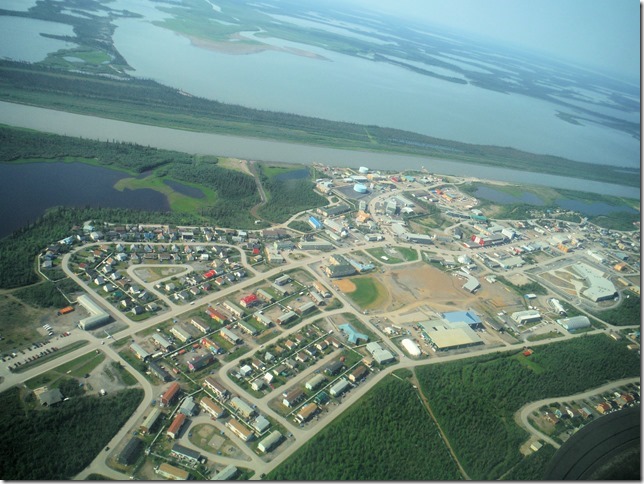
– – – and we started our course across the huge wetland/delta area. This seemingly endless sheet of land and ponds is visibly punctuated by the Mackenzie East Channel. This waterway becomes the winter Ice Road between Inuvik and Tuck, about 120 miles or so. (It will eventually be by-passed by the all-year road under construction.)
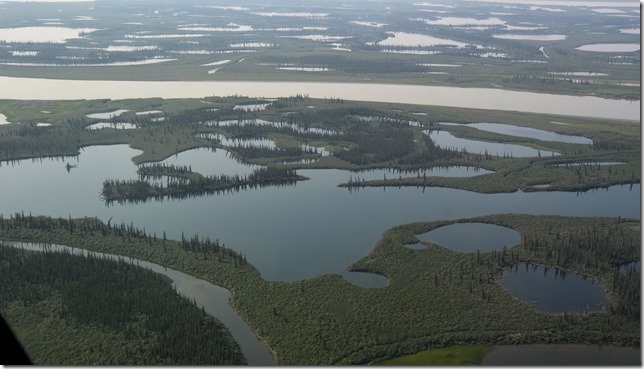
In this incredibly remote land, humans are scarce, to say the least. But our traces can be found – such as the string of DEW-line stations (Distant Early Warning) that were built during the cold-war ‘50’s to warn of intrusion or nuclear attack. We were told there are about 70 of these strung out across the Arctic. With advancing technology, they are now automated and un-manned. In the beginning, they each required a 50-man crew, year-round. Nice job, eh? Freezing your butt off waiting for Armageddon.
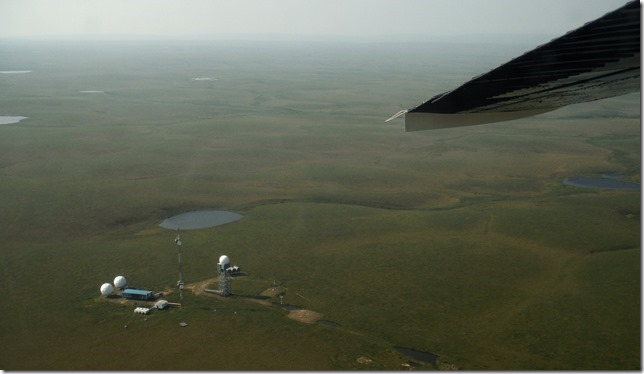
Getting close to Tuck, we pass by the largest of a curious formation known as a pingo. A pingo forms when a small lake or depression interacts with the permafrost. An ice “bubble” is created under the surface soil, expanding it upward. There are dozens of these curiosities in the area, large and small.
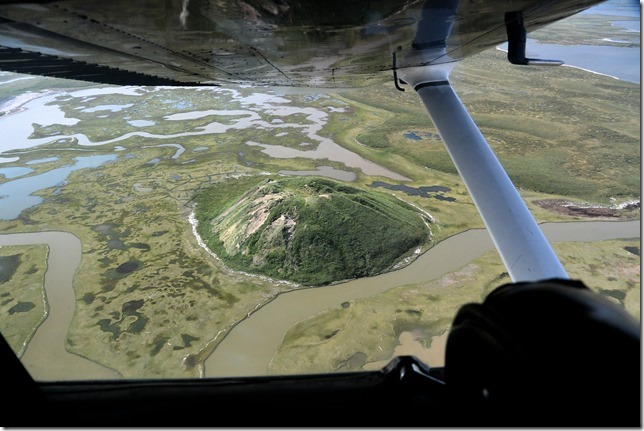
And then the tiny 900-person village comes into view.
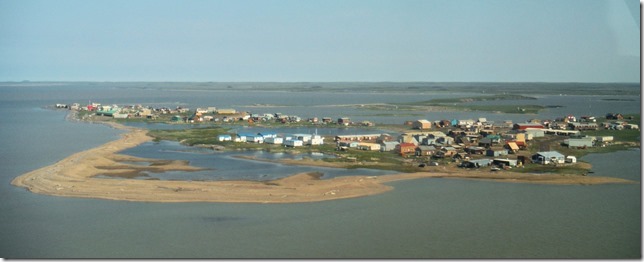
Approaching the Tuck airport, I was amazed at how they could find or fill enough solid ground to make a runway. And remember, it follows the same rules as any road-over-permafrost (see my previous post on this topic).
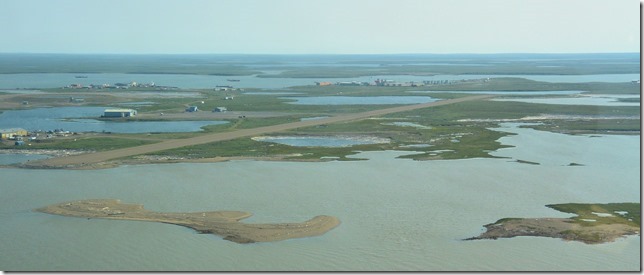
Here you go – proof positive (you can’t quite read the fine print – it says “69 27 North Latitude”). Time to tour the town.

One of the things we got to see was a traditional “ice house”. It’s not actually a house, it’s sort of a mine shaft, leading to small rooms off to each side. The permafrost in Tuck starts just a few inches under the soil, and its consistency of frozen water, rocks, and frozen mud can be seen along the sides of the access shaft. We were told that these old ice houses are in declining use; apparently the common refrigerator is more convenient. But there are still a few of the old-style cold-storage digs remaining.
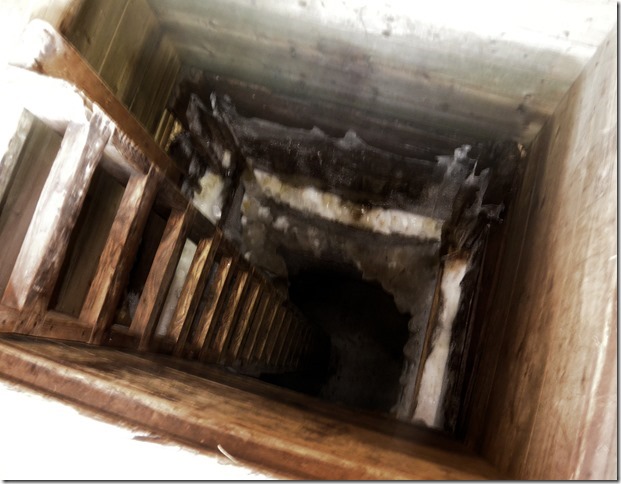
Our local guide is a resident Inuvialuit, and has collected some of her own possessions and wares to give us an idea of the Native life. Furs, antlers, bones and such for sale or for making into other products. A musk-ox skull and some hand-made wooden snow-blind goggles (latter day sunglasses).
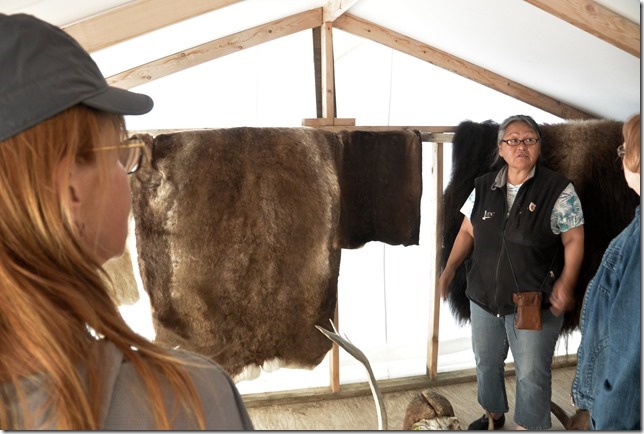
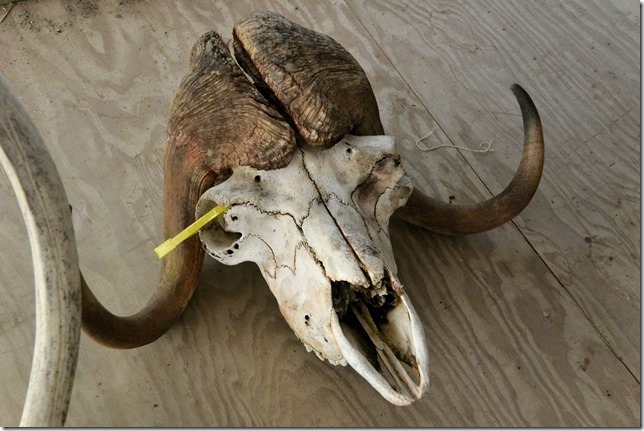
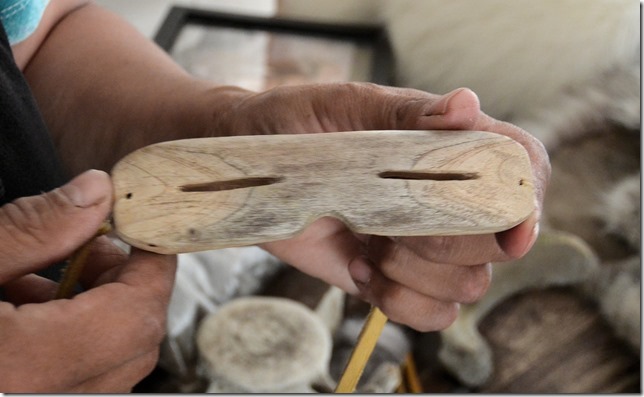
Houses are standard above-the-permafrost construction. There are a very few old-style constructions, kept either for tourists or sentimental value.
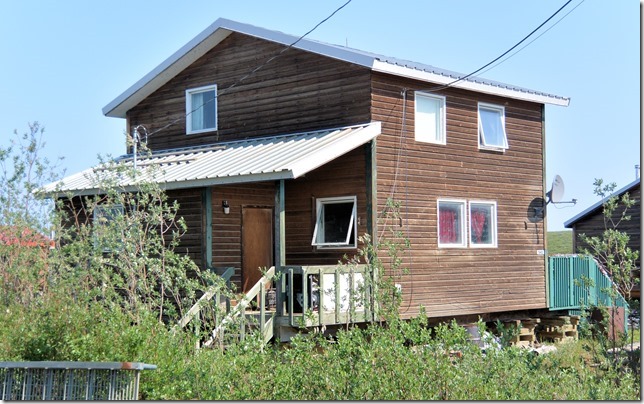
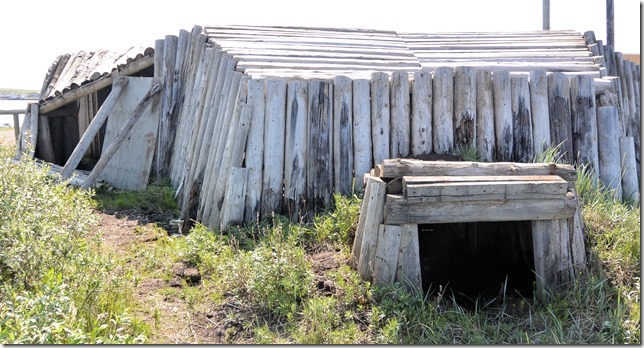
The Mackenzie River brings in huge quantities of wood, washed down from its vast drainage area. The older wood is not too useful, and accumulates. Newer wood is gathered each season for construction and firewood.
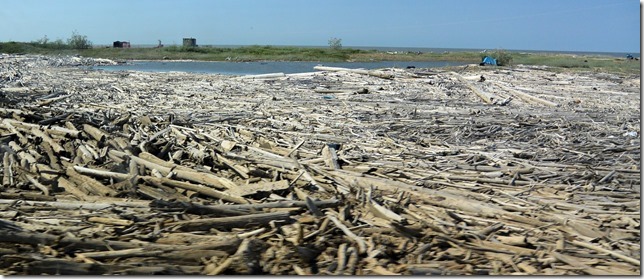
The residents use makeshift materials to create smoke-houses, and each summer they stock up on “dry fish”, a cleverly sliced-smoked-dried whitefish that comprises a lot of their winter food stock.
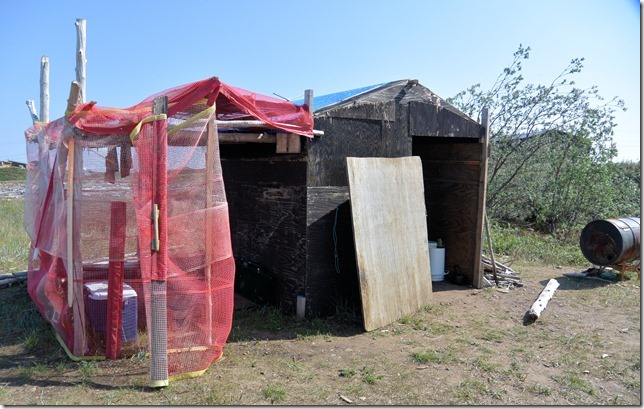
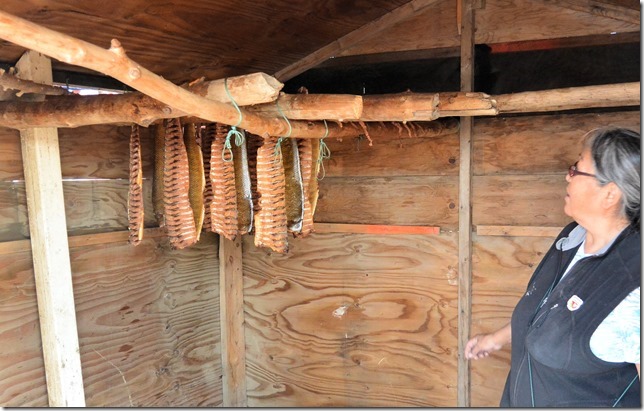
At the north edge of town, the Arctic Ocean awaits our toes – – –
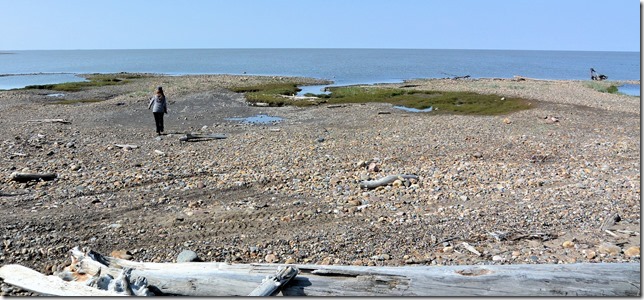
– – – and we dutifully dip them in it. Nope, no swimming or kayaking – – but it wasn’t that cold really. Maybe 50-60F here in the shallow bay.
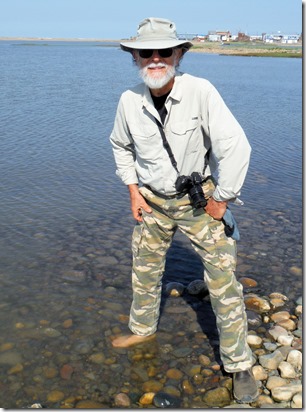
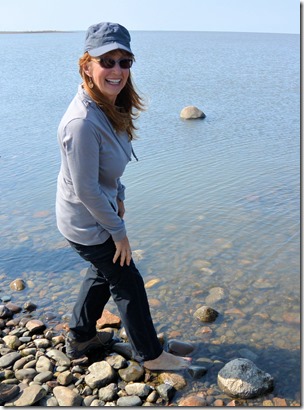
Other human artifacts are to be found, such as the local DEW line station and a moth-balled oil-rig caisson.
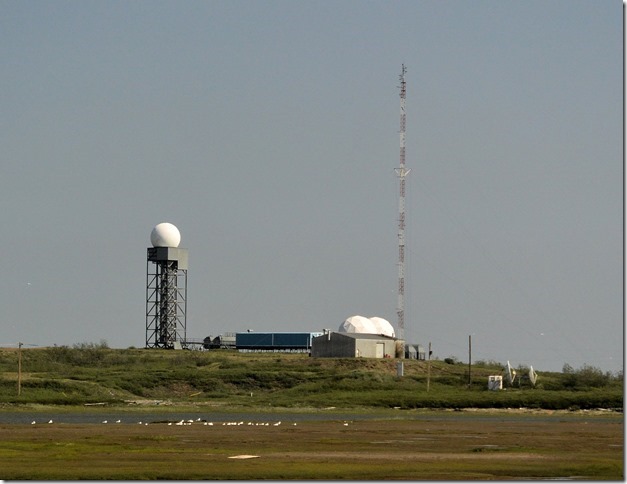
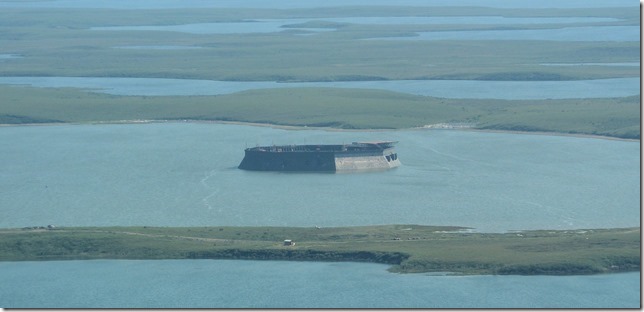
Government housing units aren’t renowned for their aesthetics, but they’re warm in the winter.
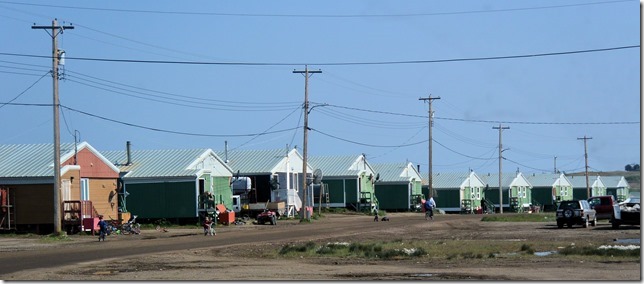
One of the most-difficult aspects to convey is the hugeness of what we see. It’s easy to find human structures and take pictures, and that’s most of what I’ve been able to show here. We humans tend to make things that are blatantly un-natural in character, and they stand out easily against the backdrop of sea, lakes and tundra.
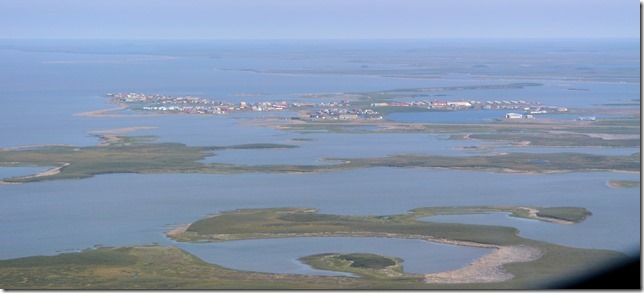
What I can’t show is the immenseness that reaches in every other direction. You look in one particular area, and you see the township (above). Then, no matter where else you cast your gaze, you can find only the endless vastness of – – – everything else.
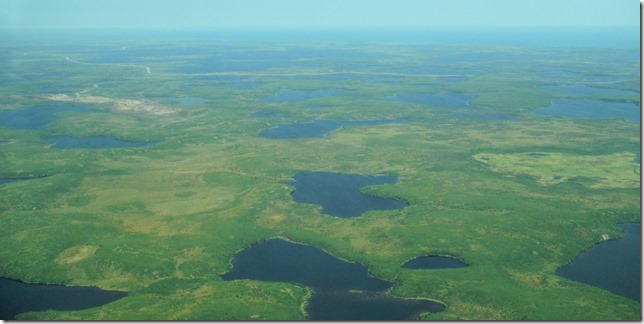
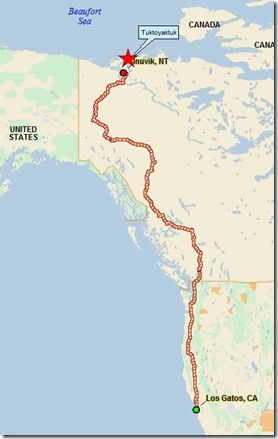
- Miles from home —
- 3,153 (driving)
- 85 (flying) or 120 (boat/ice)

I know you might not believe me, but I’ve always wanted to go to Tuk since I was about 12 when I first heard about it.
Fr Tim, they have no priest up there. Also at Inuvik, their priest is leaving this year. Maybe one of these fine towns is your next assignment?
:o)
How does all this vastness make you both feel? Tiny? Lonely? Lost? or just awe inspired?
We have three major reactions to the immense nature of this space. First, yes, awe-inspired at the size and scope. Second, a sense of perhaps “refusal” – – we can fly over it, drive along side it, or look at it from a mountain top. But it’s incredibly difficult, dangerous, and uncomfortable to actually BE IN it. On even a short hike, you must carry bear spray and swat bugs energetically. People DO camp in the back country, and it’s a challenging and arduous project, a bit too much for our spoiled selves. This true wilderness is made of muskeg, forest, mosquitoes, bears, heat and cold. Our third reaction is always a sense of deep respect and admiration for the pioneers who took on this wild place with horses and hand tools and made their way through it. They were STUDS!
Hi Greg: I have not been to the canadian arctic, but I have been to the north slope of Alaska. I stood at the Franklin Bluffs, with a caribou skull at my feet watching a flacon hunt the wind swept white cliffs. I felt small and insignificant in a place that was as it has been since the beginning of time. I was aware that in the incredible arctic, it is about survival: eat or be eaten. I was also aware that the only thing preventing me from being prey was my vehicle and its radio (Franklin is 25 miles south of Deadhorse) on the pipeline haul road (Dalton Hwy). I was amazed and moved, and it changed me forever. We need to protect the ANWR for all time and for all people to come. Thanks for your photos and blog. It was an amazing read. Jeanne Pascal 5/2/17
Jeanne,
We too were astounded, and viscerally moved, by the vastness and wildness. What was perhaps as or more impressive was the knowledge that our road-bound perspective was only a tiny fraction of the overall “truth” of the enormous Arctic.
G.
Great pics and blog! I am learning so much.Quite a bit to take in for an ole boy from Illinois.Be safe and God Bless!
Just recently found your blog and I am so glad. I am thoroughly enjoying following along on your adventures. Thanks so much for sharing.
Greg and Karen..as always excellent comment and pics..and congradulations.stepping in the waters of the see of Beaufort.quite an
acomplishment..
Happy 4th of July wherever you may bee..
Tony and Marlene
Hi Greg and Karen. Love all your blogs. I so appreciate you doing this. Your beautiful pictures are just a amazing and your write ups so interesting. This last one about Tuck and the Inuit people was great. Congratulations on stepping into the Artic ocean! What an accomplishment. All is well at the Homefront. Have a safe and wonderful time on the rest of your journey. Love, Irene